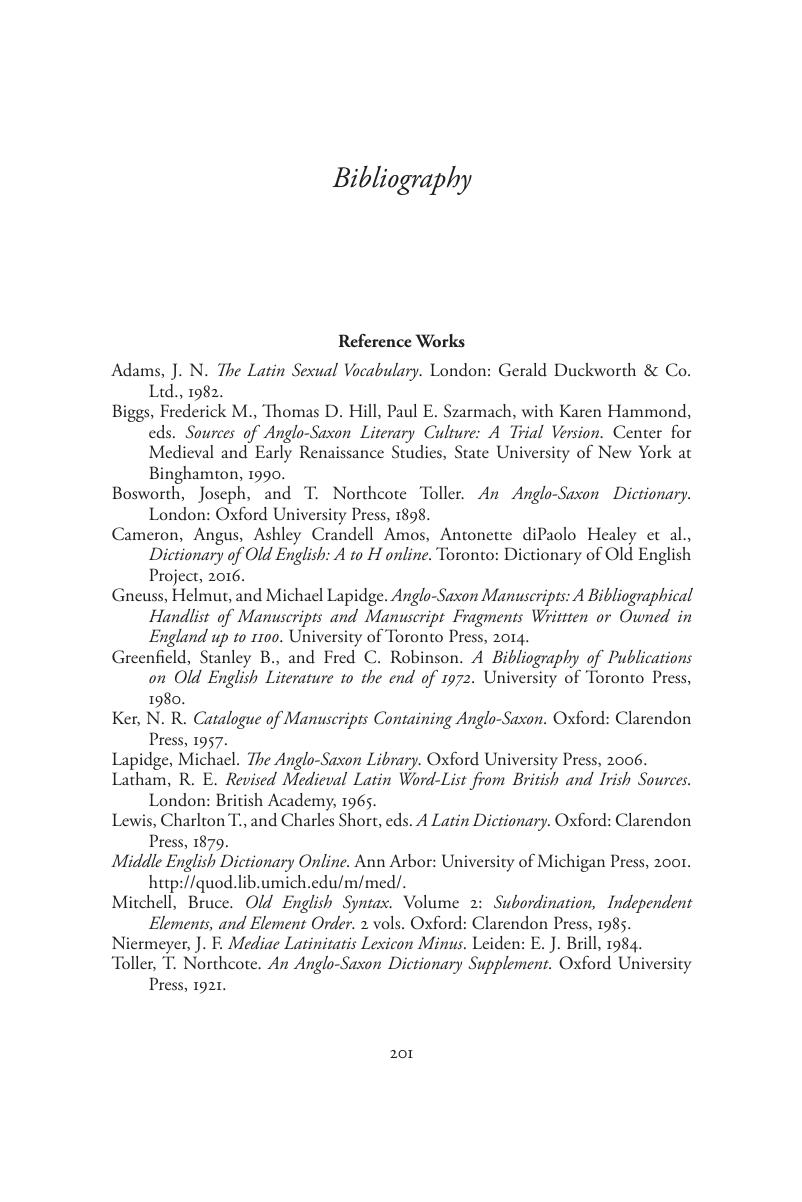Book contents
- The Experience of Education in Anglo-Saxon Literature
- Cambridge Studies in Medieval Literature
- The Experience of Education in Anglo-Saxon Literature
- Copyright page
- Dedication
- Contents
- Acknowledgements
- Abbreviations
- Introduction
- Chapter 1 Letters
- Chapter 2 Prayer
- Chapter 3 Violence
- Chapter 4 Recollection
- Chapter 5 Desire
- Conclusion
- Notes
- Bibliography
- Index
- Cambridge Studies in Medieval Literature
- References
Bibliography
Published online by Cambridge University Press: 01 February 2018
- The Experience of Education in Anglo-Saxon Literature
- Cambridge Studies in Medieval Literature
- The Experience of Education in Anglo-Saxon Literature
- Copyright page
- Dedication
- Contents
- Acknowledgements
- Abbreviations
- Introduction
- Chapter 1 Letters
- Chapter 2 Prayer
- Chapter 3 Violence
- Chapter 4 Recollection
- Chapter 5 Desire
- Conclusion
- Notes
- Bibliography
- Index
- Cambridge Studies in Medieval Literature
- References
Summary

- Type
- Chapter
- Information
- The Experience of Education in Anglo-Saxon Literature , pp. 201 - 228Publisher: Cambridge University PressPrint publication year: 2018

